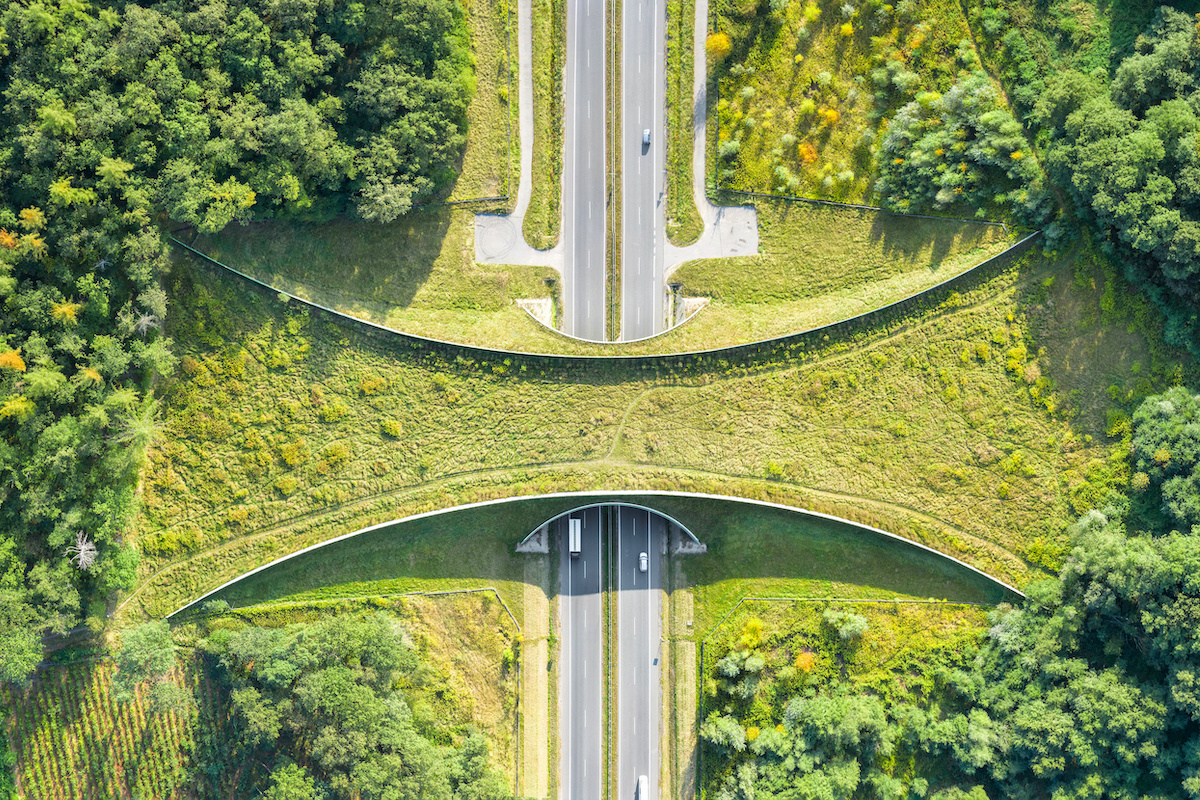The Impact of Roads on Nature
Roads Kill Wildlife, Interrupt Migrations, and Weaken Gene Pools

The science of road ecology studies the influence of roads on nature. Their findings to date indicate that roads, even unpaved ones, impact the earth in every way and at every scale. But perhaps the most vexing is noise pollution, even more than roadkill, particulate pollution, and constraints on gene pools. Noise bleeds into its surroundings. Eighty percent of the United States lies within a kilometer of a road, a distance at which vehicles project 40 decibels. As traffic swelled in the 20th century, road noise became a public-health issue, depriving us of sleep, impairing our cognition, and producing the stress hormones that lead to high blood pressure.
Most people treat the words “sound” and “noise” synonymously, but they are antonyms to acousticians. Sounds are fundamentally natural and often barely perceptible. Noise, by contrast, is a human-produced pollutant. It is unpleasant. People with good hearing register sounds as low as 10 decibels. Most animals can detect sounds at negative-20 decibels. For most of them, vision is a luxury, but hearing a necessity for survival in the wild. For this reason, most wild creatures try to get as far away from roads as they can, which confounds their migration routes and their propensity to diversify their gene mix.
Ben Goldfarb, in his book Crossings, described research that was done a decade ago on a raised green mesa in central Idaho. This area was a major refueling stop for throngs of southbound migrating songbirds, probably selected in part because there were no roads nearby. The researchers wanted to observe how these travelers would respond to amplifiers placed in the area broadcasting traffic noise from dawn to dusk. On days when the recording was played, bird counts plummeted, some species avoiding the area altogether. They found those who did stop were skinnier because they had to devote more time scanning the skies for hawks, rather than eating berries and beetles while being alerted to danger by the alarm chirps of chipmunks or martens. For the first time, this research verified that noise alone could impinge on animals’ survival.
Some national forests’ rangers and administrators are starting to push for the removal of forest service roads, concluding that the best way to create quiet habitat for wildlife is to not have roads through wilderness areas.
As Goldfarb put it at the end of his book, we need “a solar panel on every roof, a wetland on every floodplain, a wildlife crossing at every migration corridor” to reverse our devastating impact on the natural world and become a more benign presence. He continues, “And our investment in crossings must be matched by our commitment to habitat preservation: an overpass whose surroundings get developed into strip malls and condos is just an expensive bridge to nowhere.”
Congress’s recent infrastructure bill allocates $350 million for wildlife crossings and road-ecology interventions, the largest investment ever in road removal and animal-friendly infrastructure.



